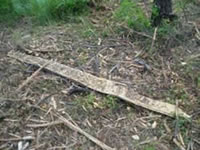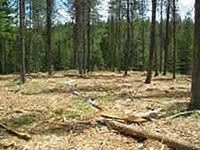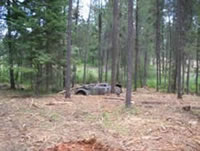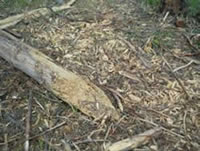
National Fire Plan Success Story
Fuel Mastication Project - Latah County WUI
Dinner Bucket Stewardship Sale Unit #5
Palouse Ranger District, Lincoln National Forest, Helmer, Idaho
National Fire Plan - Fuels Reduction
August 2009
Located on the Park Road in Helmer, Idaho, just at the National Forest boundary, this 30-acre unit was commercially thinned in the winter of 2008-2009 as part of the Dinner Bucket Stewardship Sale. This unit borders private property with homes and structures adjacent, is along two county-maintained roads, and is within the county-designated wildland-urban interface (WUI) for the community of Helmer. It was winter logged by the Purchaser (Bennett Lumber Products) using a rubber-tired skidder to minimize impacts to the soil resource. This unit was harvested to improve species diversity and productivity by reestablishing early seral species, such as western white pine, ponderosa pine, and western larch, which historically dominated the cover type in this area. Fuel treatment objectives for the area included reducing fuel buildup in the WUI and creating defensible space on land adjacent to private property.
Post-harvest, fuel loading still exceeded desirable amounts. Ladder fuel in the form of advance grand fir and Douglas-fir regeneration had grown up into the tree canopies. High, decadent brush covered with needle drape was also up in the canopies. In addition, surface slash (pre-existing and logging) levels were high (in excess of 30 - 40 tons/acre).
To complete treatment on this unit, machine mastication was done across all acres. Machine piling of fuels was considered to remove fuel, but was rejected due to smoke emission and burning risk concerns adjacent to homes and the additional activity of re-entering the stand to burn the piles. Biomass removal was looked at and considered, but ultimately rejected because of high costs and current market situation. Using a 320 Cat excavator with a Denis mulching head, it took about 10 working days to masticate fuels across the unit. This machine had zero tail swing and an effective reach of about 27 feet. Production rates average about 3 acres per day here, primarily due to the density of the residual overstory canopy. Costs for mastication were relatively equivalent to piling and burning, but objectives were accomplished in one entry.
Mastication specifications were described as follows:
- Vegetation to be mulched includes all slash from the timber harvest, deciduous brush and unreserved conifer trees greater than four inches in height but with a stump diameter less than six (6) inches (estimated 4-inch dbh) within the boundaries of Unit #5.
- Vegetation shall be reduced to a minimum height above the ground surface of 12-inches but no closer than four inches to avoid scarification of the ground surface. Sound, downed woody debris shall be mulched or abraded by the mulcher to speed the decay process, reduce insect habitat, and reduce the fuel hazard. Material generated by mulching shall be well dispersed and no longer than six feet in length. Creation of a mat of chips deeper than two inches and covering an area of 25 sq. ft. or more will be unacceptable.
Additionally, a prework was held with the Purchaser, the operator, the Sale Administrator, in which we walked around the unit and discussed the specifications. The operator was experienced, and was able to do a very nice job of implementing the specifications as written, as well as achieving the intent of the project as described in the desired future conditions. Minimal resource damage to residual trees or to soils was noted as a result of this treatment, and all resource specialists involved are quite pleased with the outcome.
Examples of Fuel Conditions at Dinner Bucket Stewardship Sale Unit #5 Prior to Mastication Treatment
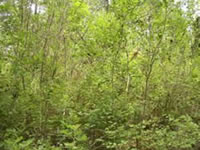
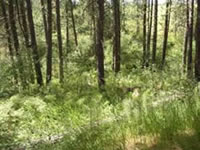
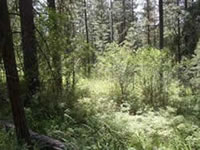
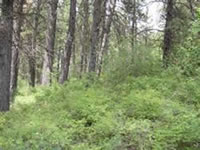
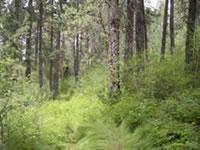
Mastication Machine at Dinner Bucket Stewardship Sale Unit #5
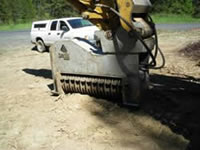
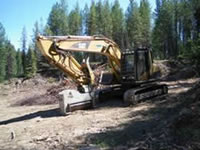
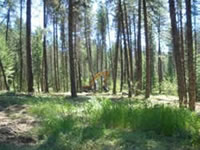
Examples of Fuel Conditions at Dinner Bucket Stewardship Sale Unit #5 After Mastication Treatment
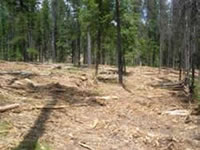
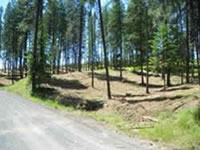
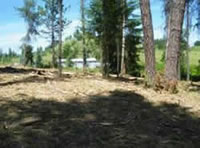
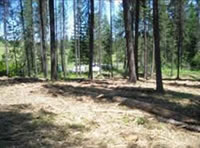
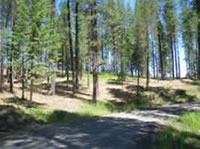
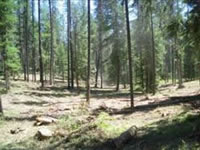
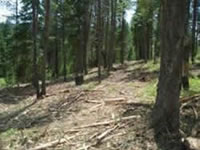
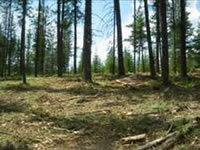
Size and Distribution of Material Left by Mastication at Dinner Bucket Stewardship Sale Unit #5
